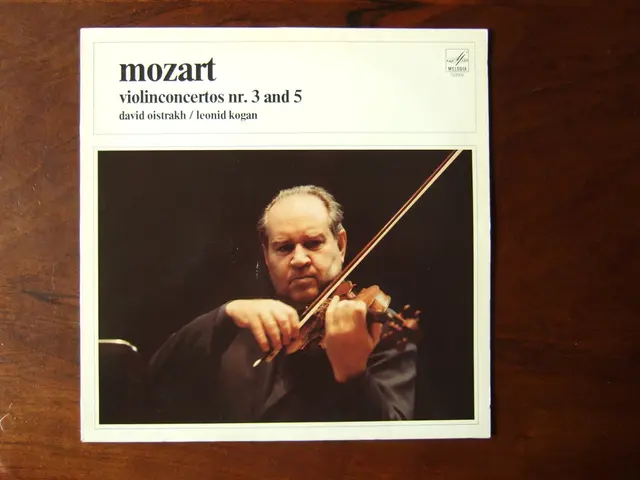Exploring Fanciful Realms and Creative Minds: How Non-Scary Films Continue to Preserve the Spirit of Halloween
In the realm of Halloween-themed films, a unique blend of whimsy, tradition, and fantasy can be found. These movies, often rooted in folklore and brought to life through animation, create enchanting worlds that appeal to a wide audience.
One such classic is Tim Burton's 2005 stop-motion animated film, Corpse Bride. Set in a fictional Victorian Era village in England, the film takes a positive spin on death, making it a staple for Halloween viewing. The land of the dead in Corpse Bride resembles the Day of the Dead, a holiday similar to Halloween, radiating vibrancy and filled with eccentric characters who appreciate creativity and self-expression.
Another noteworthy example is The Nightmare Before Christmas, a seminal stop-motion animated film directed by Tim Burton and produced by Disney. Set in the fantasy world of Halloween Town, the film blends whimsical gothic aesthetics with folklore themes by portraying classic Halloween figures like skeletons, witches, and ghosts, and integrates musical elements to enhance its magical atmosphere.
Studio Ghibli's "Kiki’s Delivery Service" also deserves mention. This animation features a young witch launching her own flying courier service, presenting a tender, coming-of-age story infused with folklore by focusing on witchcraft and magical traditions, using warm animation to create an approachable fantastical world linked to Halloween themes.
While not strictly Halloween films, "Gremlins" and "Coco" incorporate folklore and fantasy elements. "Gremlins" features mischievous, supernatural creatures related to holiday mischief, while "Coco" explores Mexican Day of the Dead traditions through rich animation, myth, and music.
"Gretel & Hansel" (2020) and "Legend" (1985) also delve into the darker side of folklore, with "Gretel & Hansel" drawing from Germanic folklore and visually styled like gothic fairy tales, and "Legend" featuring magic, sorcery, and mythical creatures like unicorns and dwarfs, evoking whimsical dark fantasy imagery reminiscent of folklore tales with strong fantastical elements.
Animators like Henry Selick, known for Coraline and The Nightmare Before Christmas, have played a significant role in bringing these fantastical worlds to life. In Corpse Bride, for example, a total of 300 puppets made of silicone and foam were created, each with joint movement and independently operated facial features, contributing to the film's surrealistic feel.
Horror movies, while not necessarily linked to Halloween, have consistently earned high rankings on the box-office's highest-grossing films list. Films like "It", "The Exorcist", and the "Insidious" franchise have grossed millions worldwide, with "Insidious: The Red Door" generating $188 million alone.
In summary, these films mix folklore and animation to craft magical, fantastical, and sometimes eerie Halloween worlds, appealing to a wide audience with a blend of whimsy, tradition, and fantasy. Tim Burton's signature style exemplifies the gothic yet playful approach to Halloween fantasy, combining dark humor, quirky characters, and atmospheric settings to celebrate the holiday’s magical essence.
Read also:
- Roosting Shark and Rambunctious Red Squirrels: Unconventional House Rental in Yorkshire Involving Aquatic Marvel, Squirrely Mayhem, and Mystical Planning Regulations
- "Primal instincts at play: Subnautica 2 designer notes our affinity for weapon-making stems from a fundamental desire for protection and sustenance"
- Dragon Age series might find a promising future with remasters, according to ex-BioWare producer Mark Darrah, but it seems unlikely that EA and BioWare possess the capability for such undertakings at present.
- In Verdansk, the dominance of automated systems in Warzone is causing an integration with Stalker, leading to a blurring of lines in the user's mind.








